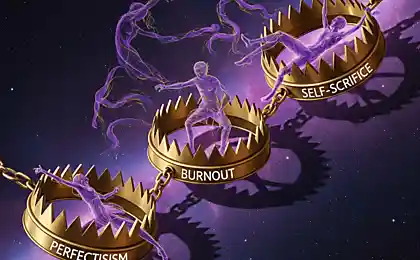292
9 ways to be a support for loved ones in difficult times and not break yourself
When loved ones go through trials, we strive to give them maximum support. However, they often find themselves on the verge of emotional exhaustion. How do you balance caring for others and your own well-being?

Why we burn out by helping others
Up to 60% of people who regularly provide emotional support to loved ones in crisis situations experience burnout symptoms themselves. This phenomenon, known as compassion fatigue, occurs when we lose our own resources while helping others.
When we ignore our own needs for the sake of caring for others, both sides suffer in the long run. The metaphor of an oxygen mask in an airplane is the most appropriate: first put the mask on yourself, then help others.
9 Effective Support Strategies
1st
Define the boundaries of your support
Setting healthy boundaries is a prerequisite for sustainable care. Clear personal boundaries reduce the risk of burnout by 43%.
Determine in advance what specific assistance you can offer. For example, “I can give you two nights a week” or “I’m willing to help with certain tasks.”
2.
Practice Conscious Empathy
With conscious empathy, we understand the feelings of the other person, but do not completely dissolve in them, keeping psychological distance.
3
Create a self-healing system
Even taking 20-minute breaks to recover greatly increases our emotional resilience. Include in your schedule:
- Daily micro-pause (5-10 minutes)
- Weekly activities that fill with energy
- Monthly days of "disconnection" from worries

4.
Use the principle of “circles of support”
The model of “support circles” proposes to distribute the emotional load among several people.
Organize a “support team” – a group of people willing to share the care of a loved one. Coordinate efforts for integrated support with distributed load.
5
Develop the skills of effective listening
In 78% of cases, it is more important for people in a crisis to be heard than to have a ready-made recipe for action.
Active listening techniques include:
- Full presence (without distractions)
- Supportive nonverbal signals
- Clarifying questions instead of advice
- Reflection of the interlocutor's feelings
Learn to recognize signals of exhaustion
Your body and psyche send out warning signals long before you burn out.
Pay attention to the following signs: increased irritability, sleep disorders, constant fatigue, decreased immunity, loss of interest in ordinary activities.
7
Practice Informed Support
The desire to help without sufficient knowledge can lead to ineffective actions. Educational support is always more effective than intuitive support.

8.
Develop emotional flexibility
Emotional flexibility – the ability to adapt to changing circumstances – is a key factor in preventing burnout.
After an intense conversation with a person in crisis, allow yourself an “emotional shower” – switching to pleasant activities to restore the resource state.
9.
Don’t be afraid to seek professional help.
Admitting your limitations is a sign of strength. In some situations, the best help is to assist in obtaining professional support.
Balance of care – the key to sustainable support
Being a support for loved ones is a marathon, not a sprint. Taking care of your own emotional balance is not selfish, but a prerequisite for effective and long-term support.
The quality of support depends on the state of your internal resources. By replenishing them regularly, you create a sustainable help system that benefits both you and your loved ones.
Emotional support
Self-care
Psychological resilience
Glossary
Emotional burnout is a state of physical and mental exhaustion resulting from chronic stress and emotional overstrain.
Compassion fatigue is a form of secondary traumatic stress that occurs in people who regularly face the emotional difficulties of others.
Emotional boundaries are the psychological limits that define where our emotions and responsibilities end and other people’s feelings begin.
Empathy is the ability to understand and share the feelings of another person, while recognizing the separation of his experiences from his own.
Active listening is a communication technique in which the listener focuses entirely on the speaker without evaluation or advice.
Generations of XX-XXI century: from the Great to Alpha - who are they?
10 reasons to stop rushing to find yourself and build a successful career























